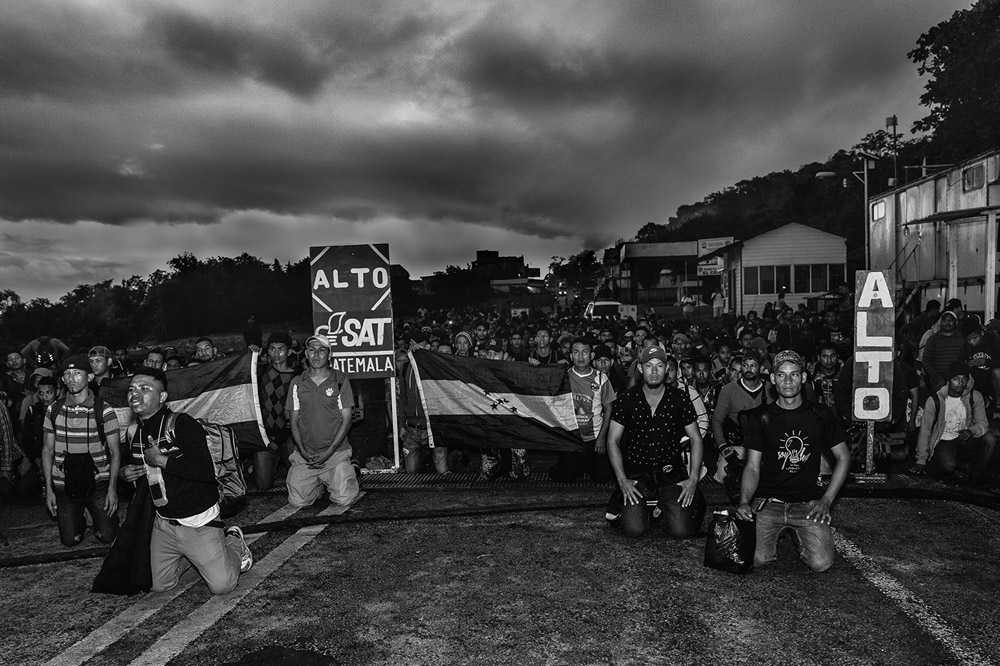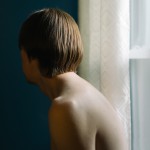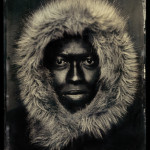The CENTER Awards: The Me & Eve Award: Ada Trillo
Starting Out, January 2020. The migrant caravan leaves Honduras and begins their trek to the Guatemalan-Mexican Border. An estimated 4,000 people left San Pedro Sula on January 15th and walked over 500 miles in a week before being captured and deported. The caravan split into two groups. 800 members traveled to the border of El Ceibo and Tabasco, Mexico to try and cross, while the larger group went to the border of Tecún Uman and Chiapas, Mexico.
Congratulations to Ada Trillo for being selected for CENTER’s The Me & Eve Award recognizing her project, La Caravana Del Diablo. The Me & Eve Award is in partnership with photographer and alum, Dorie Hagler, and offers a new $5,000 award for a female photographer, 40 years of age and over, who uses their camera to address social justice. CENTER is pleased to offer $5,000 in project support to a female-identified photographer, 40 years of age and over, who use their camera to address social justice. This program is made possible by Review Santa Fe alumna, Dorie Hagler, whose project me&EVE amplifies the voices of women. Initiated in 2016 on International Women’s Day, this project was inspired after seeing the transformative effects of witnessing women share their stories. The award includes $5,000 Cash Award, winners Exhibition at El Museo Cultural de Santa Fe, complimentary participation and presentation in the Review Santa Fe Photo Festival, and an online exhibition at VisitCenter.org
Juror Jennifer Pritheeva Samuel – Photo Editor, National Geographic shares her insights:
The projects submitted to the me&EVE Award were very strong and reflective of our concerns as a society today. They included themes of migration, political protests, identity, family, memory, as well as some archival work. The submissions that rose to the top were both visually and thematically strong – focused enough to get a window into a new world but expansive enough that the project would resonate broadly. The projects that were less successful seemed either too narrow or too broad in scope or needed more development photographically in order to hone a strong visual voice. The winner, Ada Trillo, stood out because of her very humanistic lens on the Central American migration crisis and her long term dedication and connection to this subject matter.
Ava Searches For Her Other Son, January 2020. Ava is a single mom. Her ex husband took her 9-year-old son to the United States and left her pregnant at home. She is trying to get to the U.S. to track down her other son. After she was admitted into Mexico via the state of Tabasco, she was kept in horrible conditions in a detention center until she finally had to request to be deported back to Honduras with her baby for the sake of both hers and the baby’s health. Ava recently started her own business, knitting baby clothes and trying to sell them on Facebook. She is saving money in an attempt to make her way to the United States and eventually find her boy.
Jennifer Pritheeva Samuel – Photo Editor, National GeographicJennifer Pritheeva Samuel is a Photo Editor at National Geographic, where she edited many of the stories in the magazine’s 2019 series highlighting women and the 2018 series on race and diversity. She has worked on visual media and fine art projects that probe socio-political issues for more than 15 years.Prior to National Geographic, Samuel produced public programs for Photoville and managed Anastasia Photo gallery and Hank Willis Thomas’ studio. She was a co-founder and curator of the Brooklyn Photo Salon.Samuel also worked in documentary film and served as an associate producer on several films that aired on PBS’s “Frontline,” “Independent Lens,” “POV” and the BBC, covering a range of topics, including climate change, race and education, and Hurricane Katrina.
After studying Anthropology and Photography at New York University, Samuel served as a Peace Corps volunteer on the Caribbean island of Dominica. She received her Master of International Affairs from Columbia University’s School of International & Public Affairs, with a focus on economic development and media. She currently resides in Washington, D.C.
Families Stay Together, January 2020. Migrant families squeeze onto vehicles to get a ride to the next town on their journey, sometimes 2 or 3 families at a time. Unfortunately, it’s a dangerous way to travel, as many migrants are reported to fall off of these over packed vehicles and suffer serious injury.
La Caravana Del Diablo
In January of 2020, fleeing violence and poor economic conditions, Hondurans organized a massive migrant caravan that traveled through Guatemala into Mexico. After traveling for 8 days the caravan crossed the Suchiate River into Mexico and were met by the recently established Guardia Nacional composed of former Federal, Military and Naval Police.
Mexican President, Andrés Manual López Obrador has historically called for safe passage for migrants, but when US President Donald Trump threatened to impose tariffs, Mexico reversed its policy and deployed soldiers to keep central American migrants from entering Mexico.
Migrants attempting to enter Mexico split into two major groups. The largest group crossed the Suchiate River and were tear gassed by the Guardia Nacional. Forced to retreat they waited by the river’s edge for two days. Their second attempt across the river (at four in the morning) was a success but it was only hours later that the Guardia Nacional surrounded them, put them on busses and sent them back to Honduras.
The smaller group amassed in the border town of El Ceibo in Guatemala and were met by the head of foreign relations in Mexico. He welcomed migrants in groups of 10 to enter Mexico and seek asylum. Migrants were briefly kept in detention centers and against The head of foreign relation word they were deported back to Honduras without given the opportunity to seek asylum.
Trump has effectively barred asylum seekers from entering the US by threatening to impose tariffs and cut foreign aid to Central American countries. The human cost of Trump’s political agenda is denying people their fundamental human rights. For many asylum seekers, deportation will result in living a life of extortion, impoverishment and even death. The full effect of Trump’s xenaphobic policies toward immigrants and asylum seekers will no doubt be felt for generations to come.
On Their Knees, January 2020. At the border of El Ceibo, Guatemala, a caravan of migrants plead, on their knees, with the Mexican authorities to open the gates to Mexico.
Ada Trillo is a fine art photographer based in Philadelphia, PA, and Juarez, Mexico. Trillo holds degrees from the Istituto Marangoni in Milan and Drexel University in Philadelphia. Trillo’s work is concerned with human rights issues facing Latin America. Trillo has documented forced prostitution in Juarez, Mexico, La Bestia, the migrant caravans of 2018 and 2020, and the struggles of asylum seekers directly affected by Trump’s Remain in Mexico policy, in her hometown of Juarez, Mexico. Trillo has exhibited internationally at Saint Joseph’s University in Philadelphia, The Photo Meetings in Luxembourg, The Passion for Freedom Art Festival in London, Festival Internazionale di Fotografia in Cortona Italy and at the Anya and Andrew Shiva Gallery at the John Jay College in New, York. In 2017, Trillo received a Leeway Foundation’s Art and Change Grant. Her work has been featured in The British Journal of Photography, The Guardian and Smithsonian Magazine. Trillo was recently awarded a CFEVA Fellowship by The Center For Emerging Visual Artists and was named the Visual Artist-in-Residence for Fleisher Art Memorial in Philadelphia. Her work is included in the permanent collection of the Philadelphia Museum of Art. Trillo was awarded First Place in Editorial Photos with the Tokyo International Foto Awards. She recently was awarded the ME&Eve grant with the CENTER in Santa Fe.
Marina, January 2020. The Mexican Marines surround the caravan and halt their journey north. They tear gassed migrants, including women and children, as they arrived at the Border. This is the newly formed Guardia Nacional, established in 2019 and deployed to the border because of Trump’s tariffs on Mexican goods.
How to Provide Safety, January 2020. A father, Bryan, holds his son close at the border of El Ceibo and Tabasco as he and his wife enter Mexican soil. Their plan was to seek asylum in Mexico as a means of escaping the gangs that wanted to recruit him for drug dealing and the death threats that came when he refused.
Praying, January 2020. Migrants pray in unison that God will grant them safe passage north to the United States and change the hearts of the Mexican and US government leaders. Their first prayer is Our Father. El Ceibo, Guatemala.
Casa del Migrante, January 2020. Male migrants from Honduras wait for their turn to eat at La Casa Del Migrante, a Catholic run shelter in Guatemala. Most Catholic shelters separate men from women, children, and trans. El Ceibo, Guatemala.
The Gate to Mexico, January 2020. This is the Border of El Ceibo, Guatemala and Tabasco, Mexico. For days the migrants of the caravan had been pleading with the Mexican Government to be allowed passage into the country. This is a view from the gate where they were finally allowed to enter in groups of ten.
Almost There, January 2020. Chelita clings to her mother amidst the chaos of migrants waiting to be admitted into Mexico. After days of waiting at the border Julio César Sánchez, The Director General of Special Affairs for the Secretariat of Foreign Affairs of the Federal Government of Mexico, appeared as a representative of the Mexican Government and began allowing families to enter in small groups, after making ambiguous promises that didn’t apply to all members of the caravan. He never said what would happen to the families or where they would be taken.
Crossing the Suchiate River, January 2020. Migrants from Honduras cross the second leg of the Suchiate River, as they pass through Guatemala to Mexico. Two days prior, the Mexican Government tear gassed a group of 500 migrants who arrived at the Border and attempted to wade across the river into Mexico. Despite the event, the caravan persisted. Out of desperation they tried crossing the river again. This time they succeeded and pushed forward several miles into Mexico.
Joel crosses the Suchiate River, January 2020. On January 23, 2020 the Migrant Caravan successfully crossed the Suchiate River from Guatemala to Mexico. Having traveled across two countries in eight days, a Honduran Migrant with one leg makes his way across the river with crutches, trying to keep up with the caravan.
Whatever It Takes, January 2020. Mexico closed its doors to migrants at the El Ceibo border on January 20th, 2020. This frame captures an unaccompanied minor trying to cross illegally under the gate.
Tear Gassed, January 2020. Upon arriving at the Mexican/Guatemalan Border, roughly 800 migrants managed to cross onto Mexican soil and walk several miles to Frontera Hidalgo. It was here that hundreds of troops descended upon the caravan and forcibly herded many onto buses with the use of tear gas and riot shields. Women and children were caught in the chaos, many suffering chemical burns and other serious injuries.
Barbed Wire Fences at the Border, January 2020. Upon their arrival at the Border, the migrants were met with barbed wire fences, blocking their passage. José, 6 years old, is waiting patiently at 3A.M. to start his journey across the border via the Suchiate River.
Posts on Lenscratch may not be reproduced without the permission of the Lenscratch staff and the photographer.
Recommended
-
Yorgos Efthymiadis: The James and Audrey Foster Prize 2025 WinnerJanuary 2nd, 2026
-
Arnold Newman Prize: C. Rose Smith: Scenes of Self: Redressing PatriarchyNovember 24th, 2025
-
Celebrating 20 Years of Critical Mass: Cathy Cone (2023) and Takeisha Jefferson (2024)October 1st, 2025
-
Celebrating 20 Years of Critical Mass: George Nobechi (2021) and Ingrid Weyland (2022)September 30th, 2025
-
Celebrating 20 Years of Critical Mass: Amy Friend (2019) and Andrew Feiler (2020)September 29th, 2025




































































